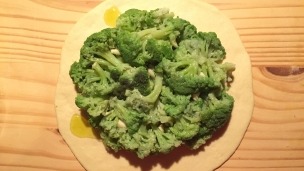Best Winter Salad: Orange and Fennel Salad
I always like to prepare seasonal salads to serve to my guests and in the winter I could not miss the chance to offer a taste of one of Sicily's most famous ones, Orange and Fennel Salad.
Now, I know that for those who follow my blog I am starting to sound boring and repetitive, but I have to say it once more, there are different versions of this dish and everyone makes it in a slightly different way or has a secret extra ingredient....and yes, even a salad in Sicily can turn into the subject of a heated debate. With black olives, with raw onion, with spring onion, with balsamic vinegar or absolutely without balsamic vinegar, with chilli or balk pepper, etc.....
I usually serve it as a side dish so I like to keep it simple.
Ingredients:
2 medium fennel bulbs, trimmed and thinly sliced (big bulbs are often not as tender as small and medium ones)
2 medium oranges
1/2 orange for the juice
Wild fennel fronds (if available)
6 spoons extra virgin olive oil
Wash the fennel bulb, half them and slice them thinly, use a knife or a mandoline. You can decide to simply peal the oranges and slice them in no particular way keeping the pith, or cut some orange suprèmes (segments) following directions below*. Mix the slices of fennel and the citrus segments in a bowl.
In a small bowl squeeze the juice of half an orange, add half tea spoon of sea salt, the extra virgin olive oil and some wild fennel fronds previously washed and chopped. At this point you can also add balck papper or chilli, if you want, or a couple of spoons of balsamic vinegar. Whisk all the ingredients together, add to the salad and toss until the slices of fennel are evenly coated and look glossy. Serve immediately with an extra sprinkle of wild fennel fronds and pepper.
You can also add black olives and onion, I personally love it with pommegranate and walnut!
*How to cut citrus suprèmes (segments)
Slice off the ends of the orange to get the flesh barely exposed, lay it down on one of the cut surfaces, then insert the knife blade into the space between the flesh and the skin at an angle and with a sawing motion, follow the contour of the orange. Remove just enough skin and pith to expose the flesh underneath and
make sure you trim off any extra bits of pith around the surface of the flesh.
Hold the fruit in one hand, look for the thin strips of membrane that separate each orange wedge. Using a paring knife slip the blade between one of the segments and the connective membrane. Cut until you reach the core of the orange and then move along to the other side of the citrus wedge and cut along the inside of the opposite membrane, again almost to the core. At this point the orange segment should release with no pith or membrane attached.












